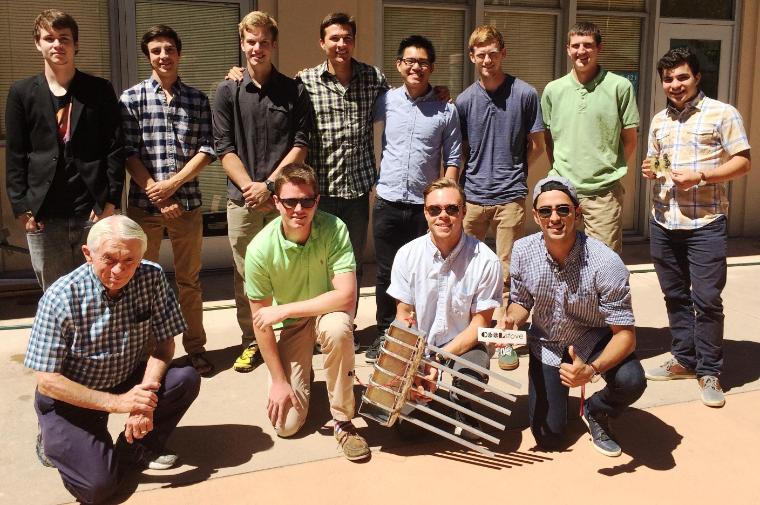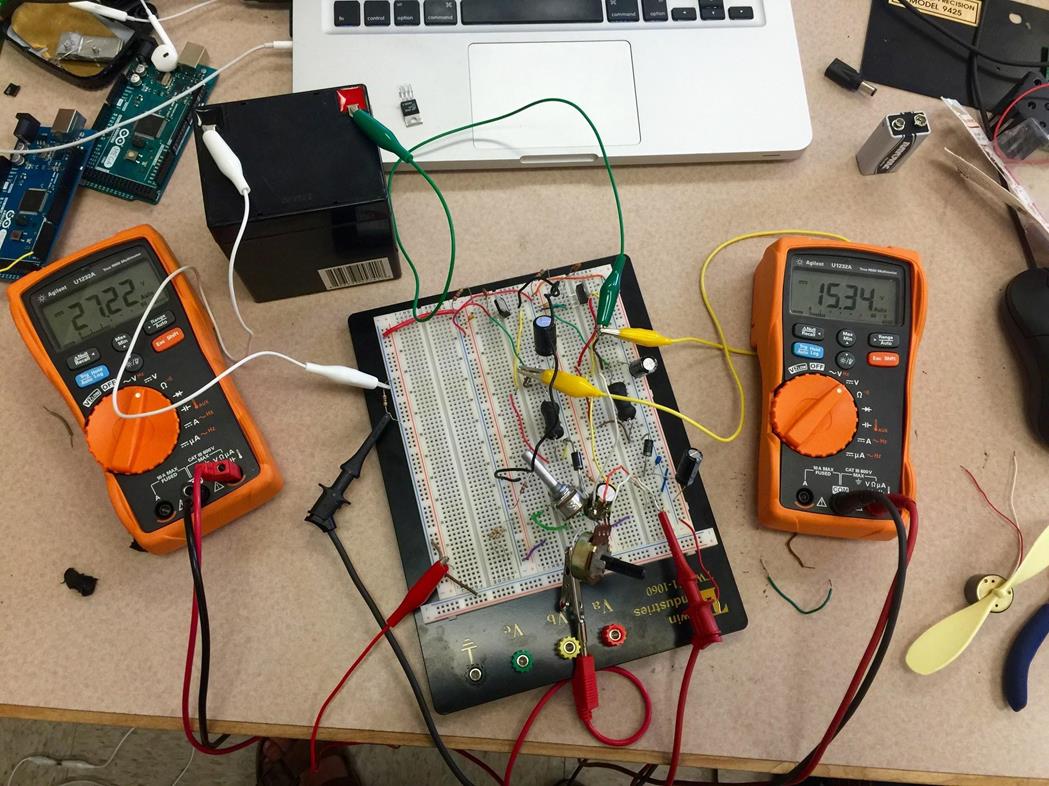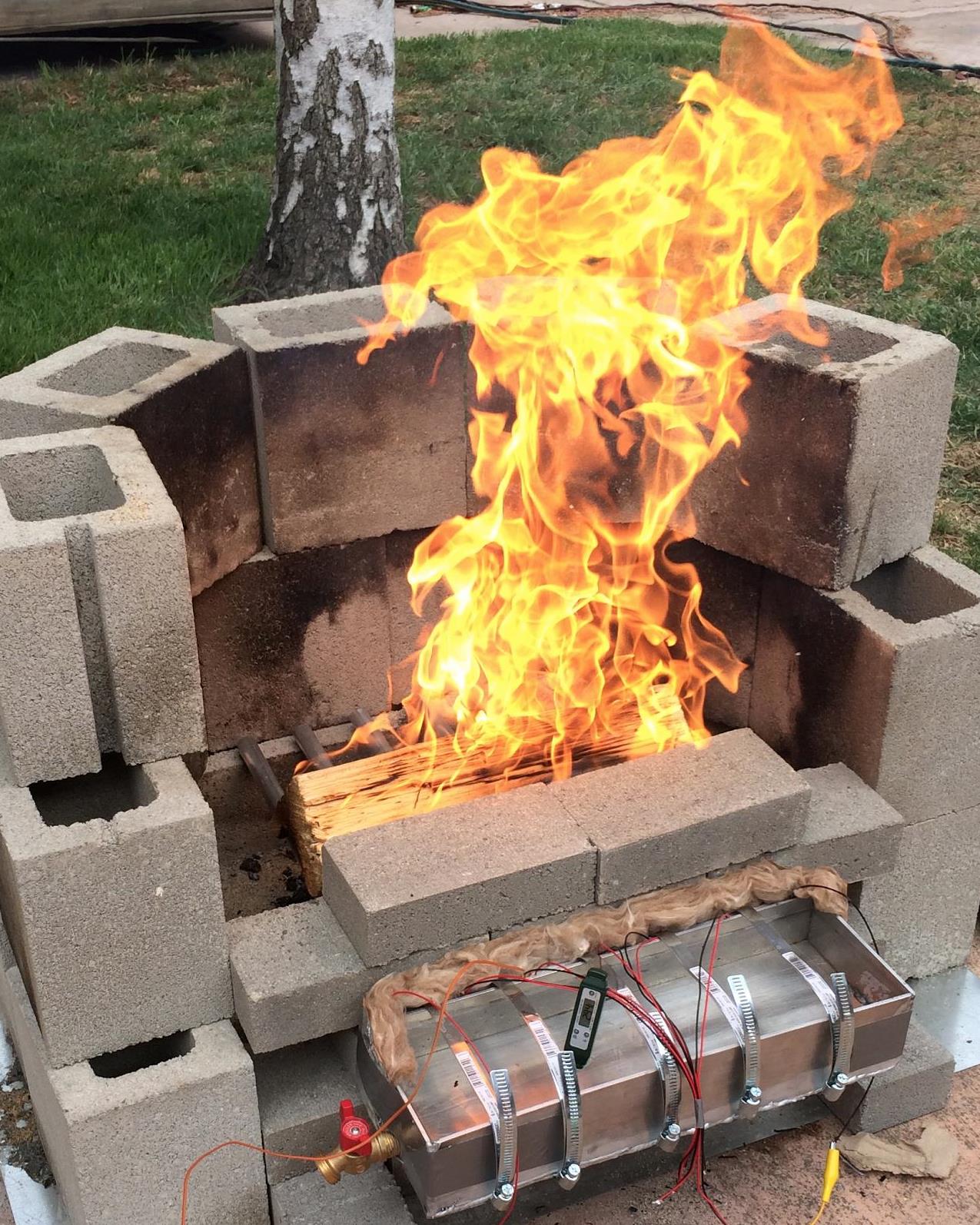
Energizing Students ... and the World
For students working in the Latimer Energy Laboratory, summer days were anything but lazy when Lab director and electrical engineering professor Tim Healy called on Robert Van Buskirk to mentor the next generation of energy experts. Since earning his Ph.D. in physics at Harvard, Van Buskirk has had an illustrious career as an energy activist, doing what he calls "technical solidarity work" in Nicaragua and consulting on Native American water rights in the 1990s. These days, the former program manager at Lawrence Berkeley National Laboratory spends a lot of his time in Africa as he transitions into a new career organized around clean energy.
"Robert is a stellar role model for our students," said Healy. "He's obviously got the technological know-how, but his entrepreneurial spirit, his commitment to serving the poor, and his ability to communicate and work with others to realize his vision and goals are what set him apart. Our mission in the Lab is to educate students on sustainable energy so they can use that knowledge in innovative ways to solve real world problems; Robert is an example of just how that can be done."
Van Buskirk took time out between trips to enlist the students' help on three of his pet projects: a micro-grid power allocation device, a cookstove fan that pasteurizes water while generating electricity, and a system for pulling water out of the air to irrigate vegetation that might die in times of drought.
Power to the People
For the first project, mechanical engineering seniors Matt Burke and Ryan Greenough along with electrical engineering senior Nico Metais and junior Scott Ryan developed the foundations of a smart system to control micro-grid power distribution from a central power station. "As Africa becomes electrified with solar, new technologies are needed to manage how the electricity is distributed and to ensure people are getting what they need and what they pay for," said Van Buskirk. Starting with a prototype their mentor provided, the students got to work optimizing the scheme.

"The original design used a single output DC to DC converter at the central power station. This meant the same voltages would be sent to all the distribution power systems regardless of actual need for different households," said Greenough. "Our goal was to create a DC to DC converter that could receive a voltage from one source and output several different voltages," continued Burke. "We designed a system to read how much power is being used down the line by each group distribution unit, and adjust the output accordingly," said Metais. The team used "a digital potentiometer controlled by an Arduino microcontroller to receive voltages and vary resistance to reach the desired output voltage at the central station," added Ryan.
At the end of the summer, they had Silicon Valley startup eIQ Energy—specialists in optimizing PV power systems using power electronics—perform a design review on their converter. Ryan will implement this input as he continues the work for his yearlong senior design project. Meanwhile, Van Buskirk is developing a partnership with the Catholic Diocese in Malawi to bring an electrification project to the area where the converter will be put to the test.
Where There's Smoke...
We've all heard the adage "where there's smoke, there's fire," but a certain team of summer energy scholars has crushed that old chestnut by chasing away the smoke to find electricity and clean water beyond the haze. And, no, it's not all just smoke and mirrors!

Juniors Fred Feyzi (computer engineering), Ryan Baron (electrical engineering), and Chris Clark and senior Mike Rudolf (both mechanical engineering) set out to solve three problems common in the developing world. The solution they came up with seems magical but is really just great engineering.
The problems: 1) lack of electricity during cloudy winter months in areas dependent on solar power; 2) unsafe levels of poisonous gases produced by indoor cookstoves; and 3) unsafe drinking water. "By making a few improvements to a common cookstove, we can provide effective ventilation to eliminate the buildup of poisonous gases within a home, purify drinking water for a family, and create a means of income through the generation of electricity that can be sold back to a micro-grid," said Feyzi.
Their prototype, dubbed the Cool Stove, works like this: Electrical power to run a ventilation fan is created using thermoelectric generation chips (TEGs). These chips require a hot and cold side to produce a temperature differential large enough to create output voltage. Horizontal aluminum rods attached to the hot side of the TEGs transfer heat from the fire to the chips. For the cold side, a coolant, such as water, is needed. Here's where the magic happens: Room-temperature unpurified water enters an aluminum tank attached to the other side of the TEGs to help the chips keep their cool. Over time, as electricity is being generated from the chips and the air is being cleared of smoke, the water gradually heats up to 72 oC, at which point—fully pasteurized against E. coli and other diarrhea-inducing bacteria—it is removed to a clean water container, and the tank is refilled with a fresh supply of unfiltered, room-temperature water. Excess electricity generated from the Cool Stove can be sold back to the local micro-grid to serve the community.
"Our final tests of the summer showed that nearly four liters of water could be pasteurized in just over an hour and a half, but what is really significant about the results is that even as the cool side of the chips increased all the way up to pasteurization temperature, the chips were still able to produce enough power to maintain the energy supply rate way above 10 watts," said Baron.
"If it's too much trouble or too expensive to disinfect water, people won't do it," said Van Buskirk. "This solution provides motivation to disinfect since power is generated in the process. Nobody I know is doing this, and I am very, very excited by what the students have come up with. Their approach to heating up the chips and then cooling them down with transient application of the cooling water is quite novel and allows for a rapid heat flow through the chips without building a complicated mechanical heat transfer system. Very nice!"
Save the Trees!
Here's a sad number for you: 12.5 million. That's the number of trees the U.S. Department of Agriculture estimates have died during California's current drought*. But as the state experienced its fifth dry summer in a row, a crew of dedicated Broncos turned their expertise and innovative thinking to the problem and devised a system for pulling water vapor out of the air. With just fans, a box of sand mixed with special salts, and some small solar heaters, mechanical engineering undergraduates Andy Ly, Eduardo Melendez, Maximilian Reese, and environmental science major Ethan Hayden have built a prototype that is showing great promise.
Using a fan to draw cool, humid nighttime air into a box filled with a solution of sand and dessicants—a particular type of salt that draws moisture (you're familiar with dessicants; they're in the little mystery packets tucked inside your new Nikes to keep the shoes dry)—the water vapor is condensed overnight. "Then during the day, using the power of the sun and the clear glass and reflective glass on top of the still, we concentrate the energy of the sun to evaporate the moisture we collected overnight. Once we evaporate the water out of the mixture, it condenses and drips down the solar still into a collection container to be used for irrigation or potentially as potable water for drinking purposes," said Melendez.
“It’s really cool that the dessicant naturally kills all bacteria and viruses,” added Reese. "If you're just trying to condense water using a fog collector or some other technologies that take vapor straight out of the atmosphere, you end up with nonpotable water, and you have to do another filtering process on it. With the dessicants, you end up with really clean drinking water."
While the team is excited to have devised a system that is relatively inexpensive and completely scalable, Ly noted, "There's so much room for improvement; this is just the start." Maybe, but Van Buskirk is pumped about their success. "You give these students an idea and they come up with a better one. It's great; it's wonderful!"
* Source: USDA's "2014 Aerial Survey Results: California" report